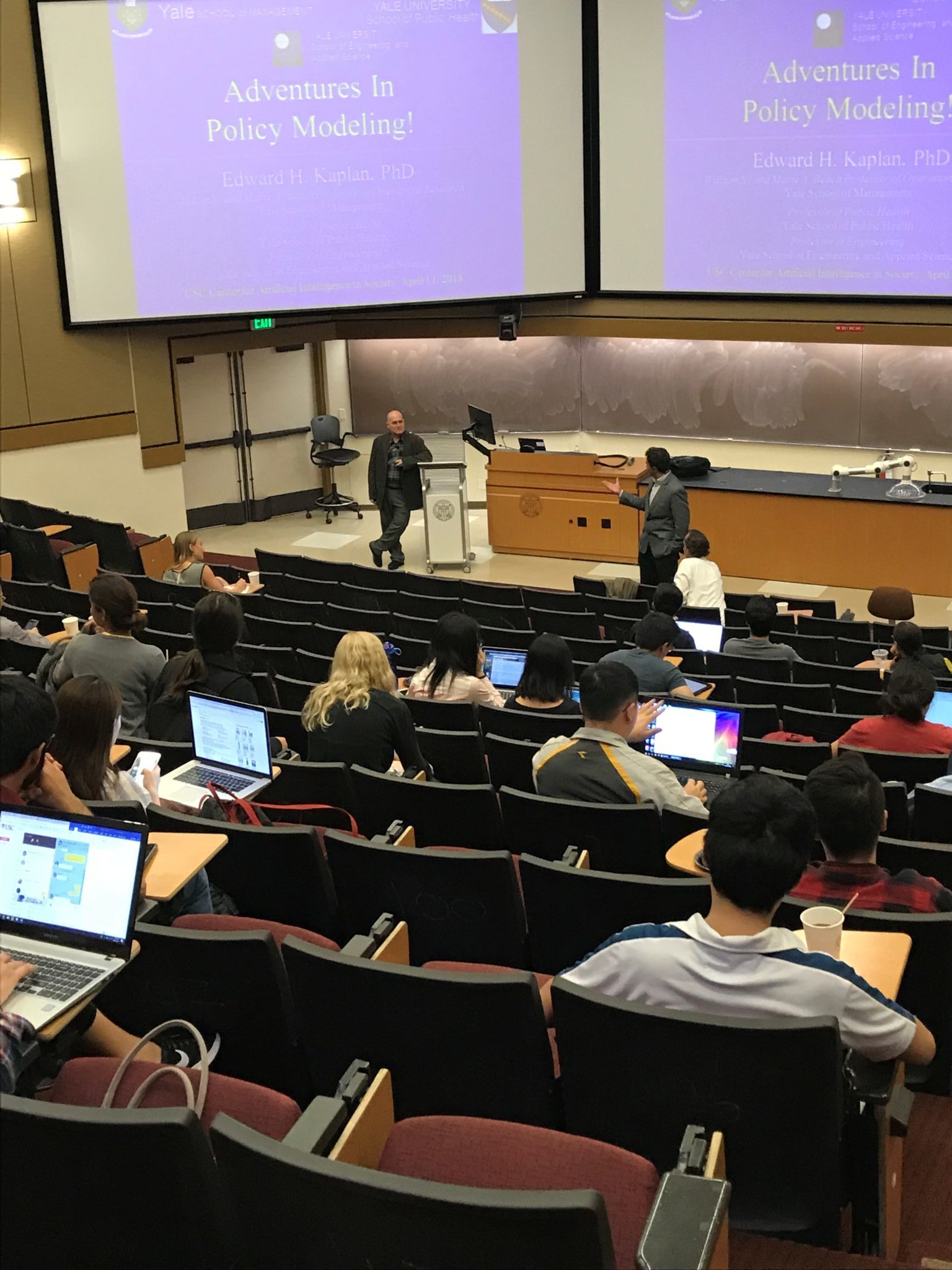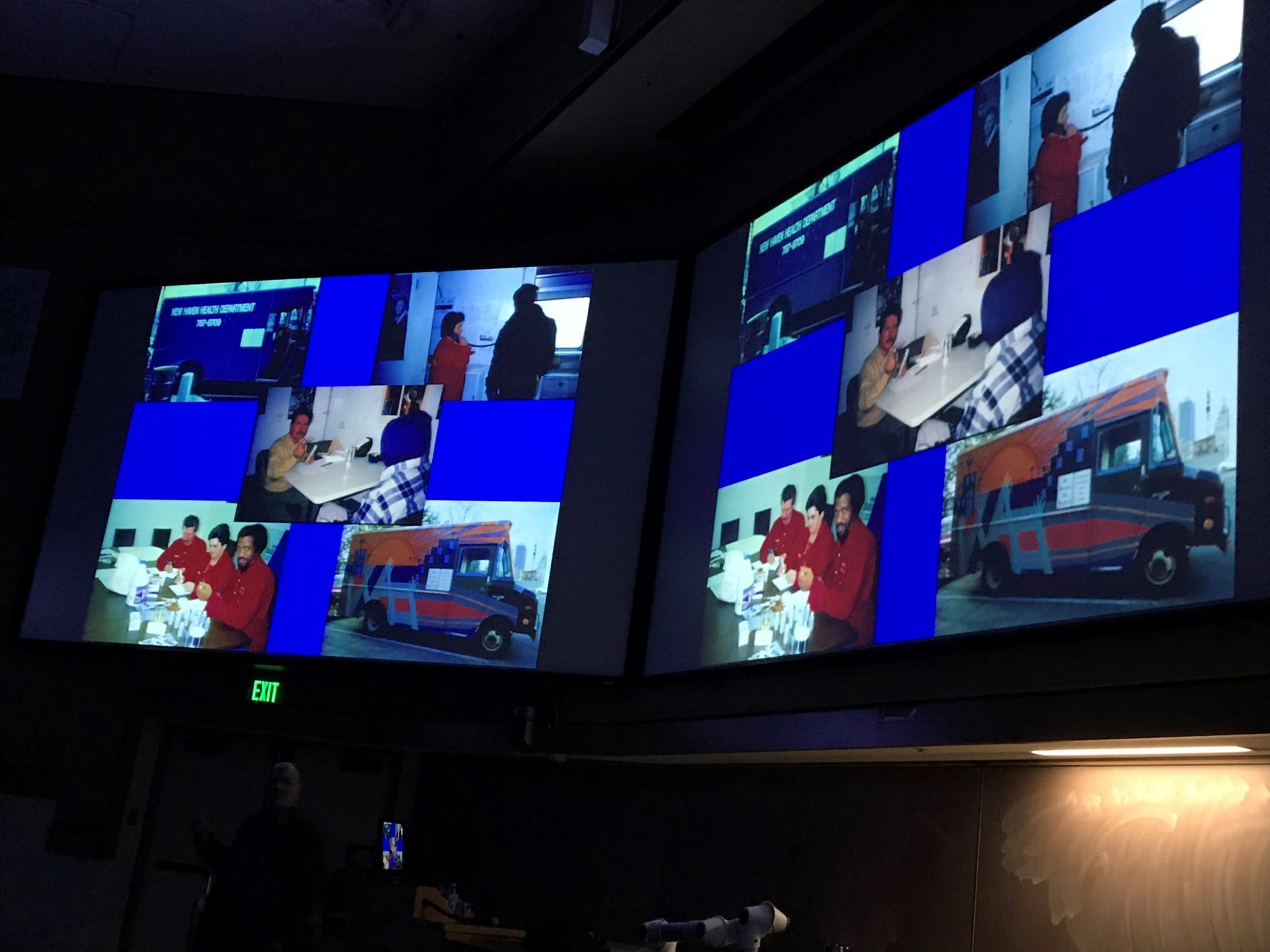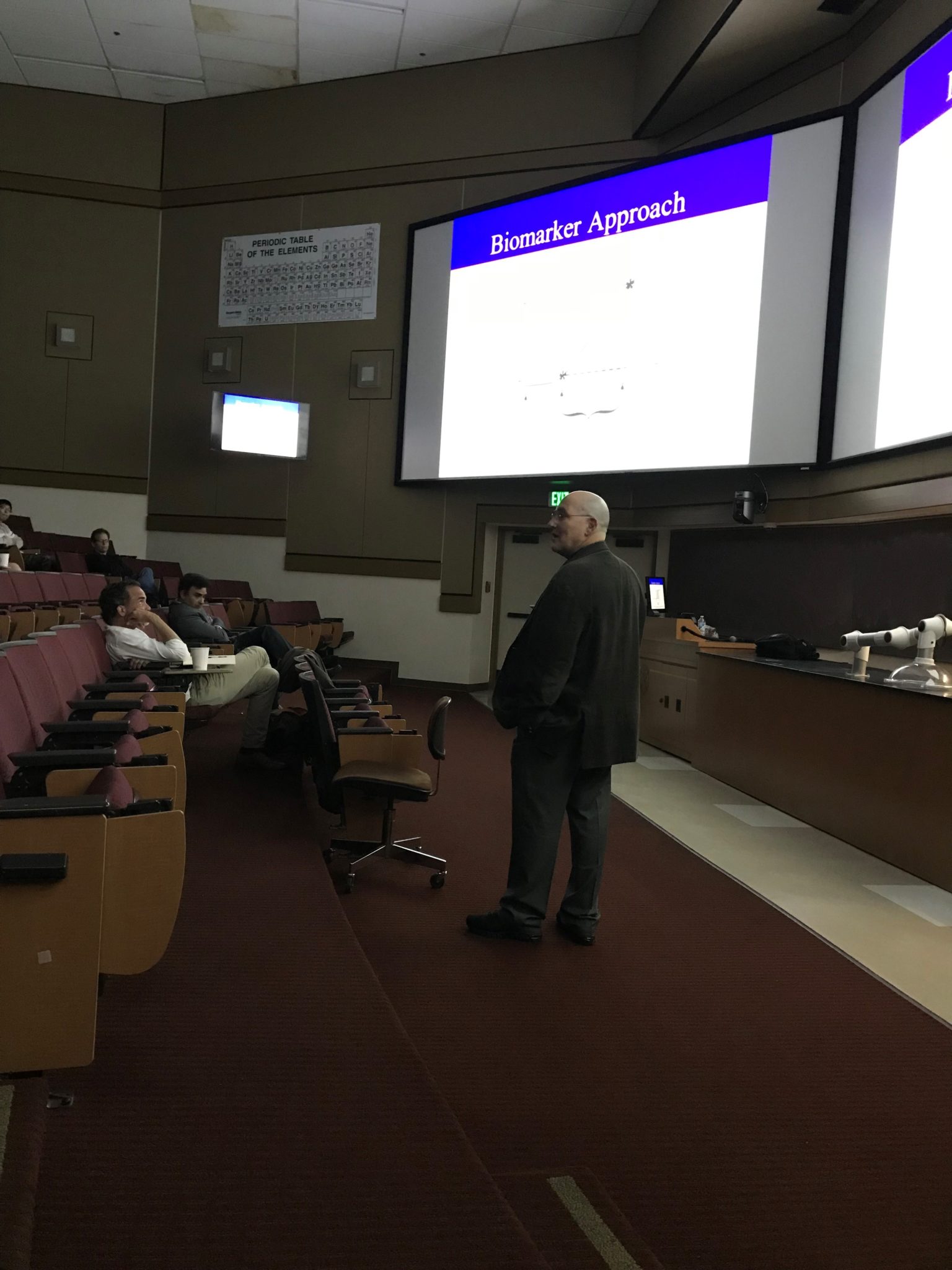
USC CAIS Co-Director Dr. Milind Tambe introducing Dr. Ed Kaplan.
Dr. Edward Kaplan presented a talk about policy modeling, an application of operations research focused on public policy. He explained that policy modeling aims to help policy makers formulate informed decisions, which are often constrained by time, budget, and small data sets. Unlike traditional scientific inquiry, in policy modeling there is often no time for randomized control experiments to assess the methodology or refine the question. Dr. Kaplan noted that finding suitable problems for policy modeling often boils down to asking whether performing this type of analysis will lead to better, or more informed decisions. He also remarked that it is important to choose methodology that is simple enough for policy makers to understand, but complex enough to capture the problem. Dr. Kaplan went on to share several examples of his work.
The first project Dr. Kaplan presented was his very first foray into policy modeling. In the early 1980s, the city of Boston was planning the renovation of some of their public housing units. In order to complete the renovation, the housing authority needed to make a plan to shuffle residents into empty apartments as the renovations were carried out. He was called onto the project because the housing authority, who was trying to create a schedule by hand, had gotten stuck. Using what are now standard integer programming techniques, Dr. Kaplan was able to help them create a simple model of the problem which produced a schedule that not only solved the problem, but that was able to cut the construction period by six months. The Boston housing authority went on to use Kaplan’s model in a number of additional projects over the next few years.

Dr. Kaplan described the next project he presented as one of the most meaningful he’d ever worked on. The project was in partnership with the New Haven, Connecticut needle exchange program. Earlier studies of needle exchange programs had been based on participants’ self-reported accounts, which suffered from social desirability bias. Dr. Kaplan helped the team design a needle tracking system that could be analyzed in a manner similar to inventory tracking. Each participant and each needle were given a unique code so that the needles given out and the needles returned could by cataloged. A subset of needles were then tested for HIV. By switching the focus from behavior change to the change in HIV rates, the bias from human participants was eliminated. Dr. Kaplan likened the system to cleaning dirty laundry. By giving out clean needles, the program was able to reduce needle circulation, meaning needles were being shared by fewer users. Analysis of data from the needle tracking system also showed a decline the in fraction of incoming needles infected with HIV.

Dr. Kaplan briefly presented two additional projects. One project used biomarker testing during HV tests and queueing theory, specifically Little’s Theorem, to help the CDC better estimate the rate of HIV incidence. This new method showed that previous CDC estimates had been too low. The last project Dr. Kaplan explained was about evaluating policies for vaccination in the event of a bioterror attack. Previous policies had focused on epidemiological approaches, which might work well in the event of a natural outbreak. The new policies designed by Dr. Kaplan and his colleagues focused on creating more robust plans that would work across many different scenarios rather than the most likely natural outbreak scenario.



